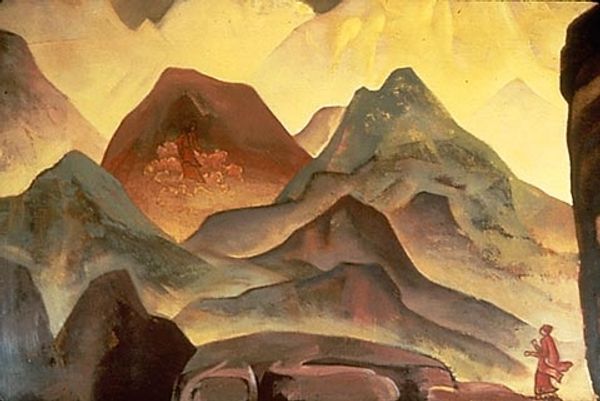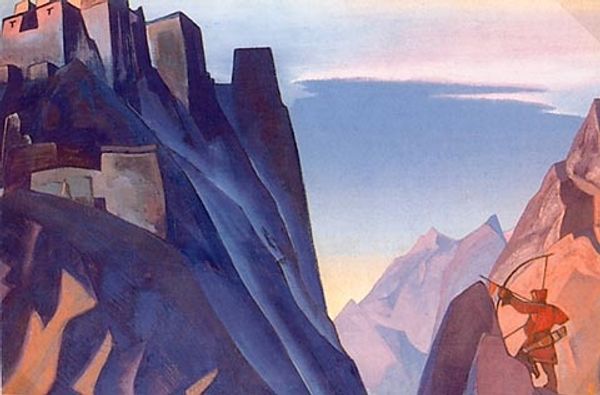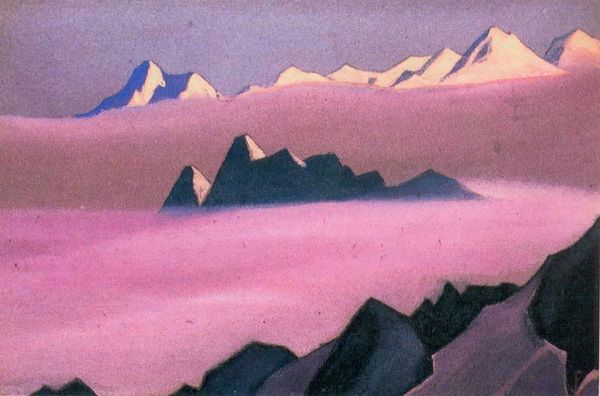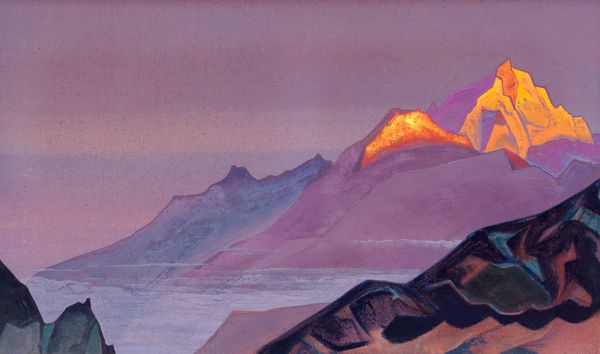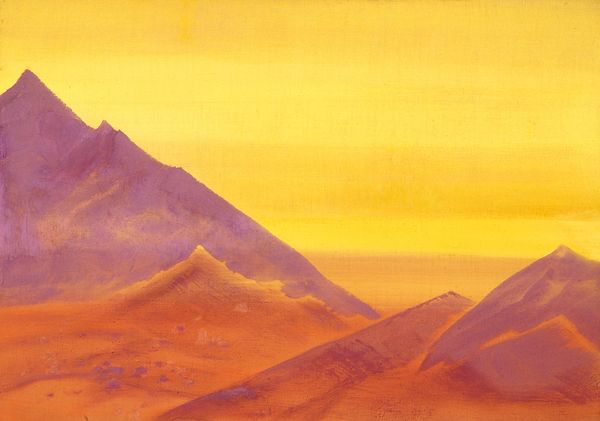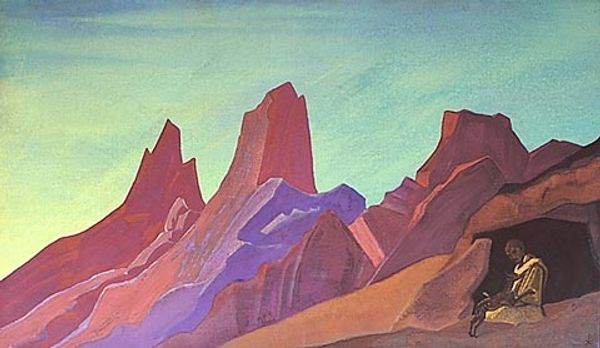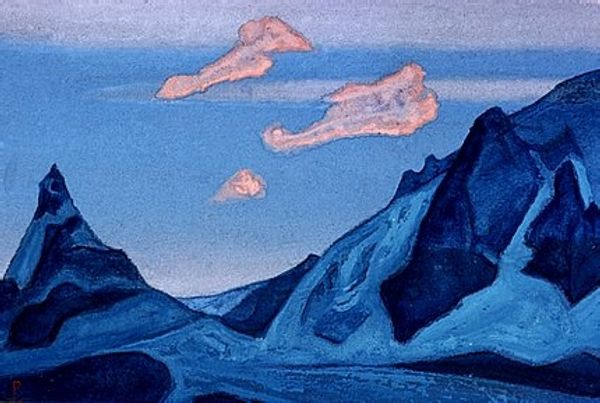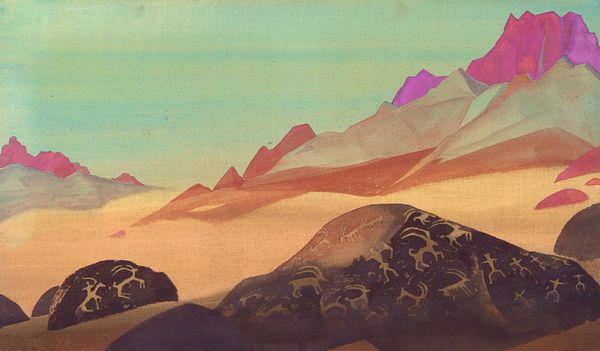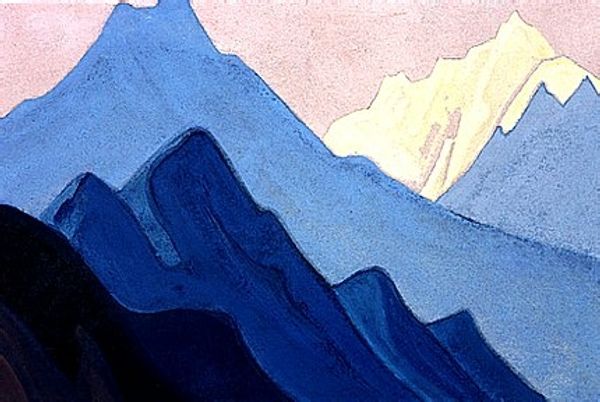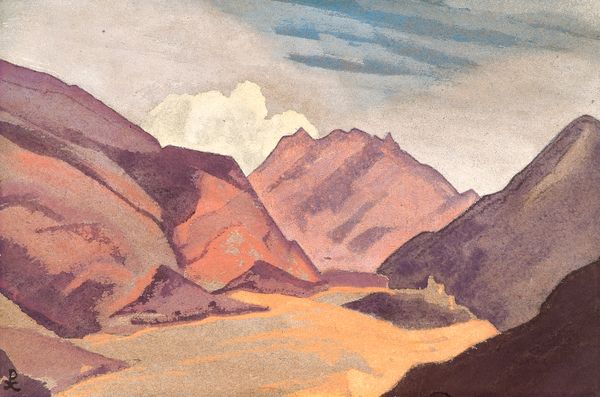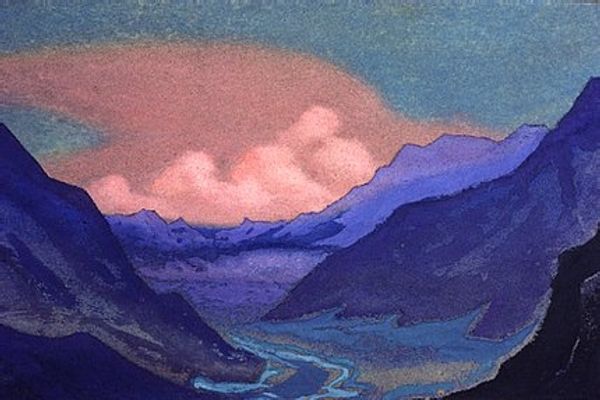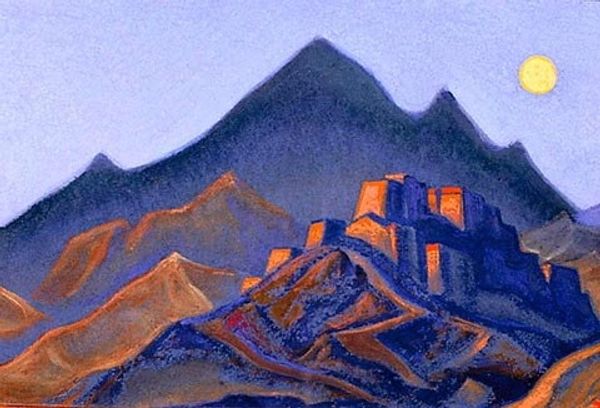
Copyright: Public domain
Curator: What a stunning view. We are looking at "Himalayas," an oil painting created in 1937 by Nicholas Roerich. Editor: It feels incredibly still, almost austere. The palette is dominated by earthy browns and striking oranges; is this a sunset? The geometric shapes comprising the mountain range project a solid, grounding energy. Curator: Roerich was fascinated by the spiritual dimensions of nature and dedicated to the artistic exploration of landscape as a place of cultural and personal significance. In "Himalayas", consider the paint itself. Notice the thin applications in certain areas, juxtaposed with visible texture, a clear indication of his process. Editor: I am thinking about how this artwork connects with environmental activism. Given our current concerns about climate change, the portrayal of landscapes and our human interaction with them, carries enormous resonance. The scene feels remote but Roerich encourages us to reconsider our place in it, urging us towards reflection on the sustainability of existence. Curator: Indeed, the Romantic ideal is evident, particularly in how Roerich translates observations en plein air through the materiality of his brushwork. Consider how these choices highlight his artistic practice but also potentially critique the ease with which natural beauty is commercialized, packaged for consumption through tourism. Editor: Yes! It almost presents an eco-critical dialogue around accessibility versus preservation—who can access these landscapes and at what environmental cost? Are paintings like "Himalayas" simply contributing to romanticized views, or can they become powerful tools for social justice? Curator: Viewing it with a Materialist lens, I focus on the tools and labor Roerich employed, thinking about the sources and production of oil-paint as commodity. By observing the choices he made in portraying "Himalayas," we see that there is a deeper inquiry regarding resource and availability, or perhaps over-consumption in modern industrialized society. Editor: In that case, let’s think about it! Seeing this work has expanded my perspective beyond the aesthetic; the political implications, even if subtle, are what make this landscape worth contemplating in our current era. Curator: Absolutely. Analyzing the method Roerich chose gives deeper insight into "Himalayas" as more than just representational mountain view; it speaks volumes about his era, as well as invites questioning of our own impact on such landscapes now.
Comments
No comments
Be the first to comment and join the conversation on the ultimate creative platform.
